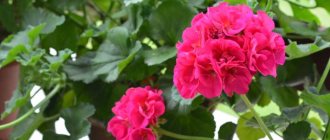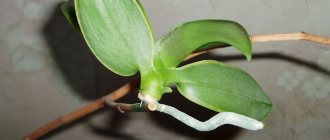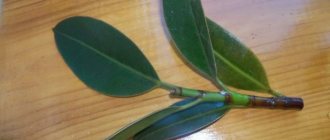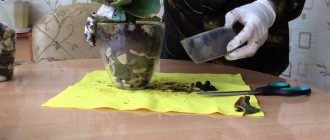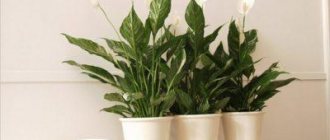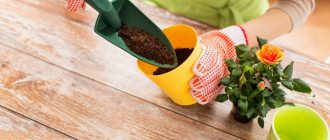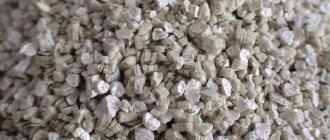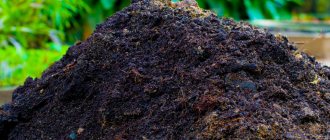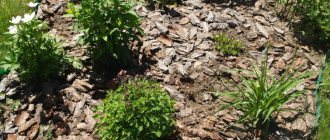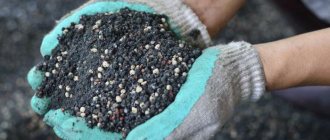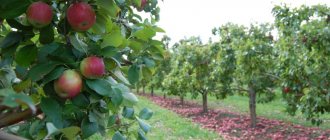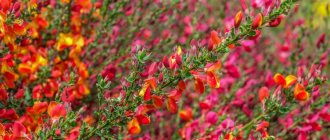Of the large variety of orchids, most grow in places with no soil:
- Climbing up tree trunks
- Find a place on rocky ledges,
- On stumps, etc.
Therefore, quite often, especially for beginners in floriculture, the question arises:
- What pots should I plant phalaenopsis in?
- What should you consider when choosing a growing container?
Let's try to figure it out.
How to choose a pot for a phalaenopsis orchid?
What kind of pot is needed for an orchid and how to choose it?
When choosing a pot for phalaenopsis, you should be guided by the requirements for it.
Moisture drainage
Orchids do not tolerate waterlogging of the roots.
When choosing a container for growing, you need to make sure there are drainage holes at the bottom and bottom of the pot. Or with the opportunity to make them yourself.
If it is impossible to make such holes, you will have to strictly monitor the humidity and come up with something with drainage.
Only professional orchidists can grow in such containers , who, thanks to many years of experience, can “by eye” determine the condition of their pets.
Otherwise, there is a high risk of the flower dying.
Root aeration
Advice! If there is insufficient air circulation, you can install a small fan nearby.
The root system, due to its natural structure, is covered with velamen . It is a spongy, multi-layered, hygroscopic dead tissue filled with air.
In the absence of air circulation at the root zone, velamen begins to rot .
After the loss of such a shell, the plant is not able to absorb moisture and microelements necessary for life.
Temperature
Another important condition for selecting a flower pot is a material that provides the necessary temperature conditions for the roots .
It should not contribute to overheating or hypothermia of the root part of the plant.
Safe root extraction
The home for the root system should not constrain it and be too free for it. The ideal size is the diameter of the pot, which exceeds the size of the root part by 3-4 cm.
This will protect the roots from damage during replanting and ensure even absorption of moisture and drying.
You should not choose a flower pot with a cone at the top.
Where to buy and how much will it cost?
There are two options for purchasing an orchid pot: online or in a specialized flower shop. The cost of pots varies from 50 to 2500 rubles , depending on the material from which it is made.
Choosing a pot suitable for an orchid is a responsible process, but it is not as complicated as it might seem. The main thing is to have a good idea of what it should be and focus on such criteria as material, size, aeration, moisture permeability and design.
What kind of pot is needed for orchids: photos and descriptions of species
Today, the variety of flower pots for orchids is amazing.
Sometimes it is difficult for beginners to make a choice .
The variety of pots used for orchids is great, but each container has its own characteristics.
Let's try to understand the pros and cons of each type.
First of all, they must meet the requirements:
- Ensure sufficient moisture drainage;
- Have good internal air circulation;
- Be safe to extract the root system;
- Maintain the required temperature.
Plastic
It is considered the most common and acceptable option for growing phalaenopsis in normal home conditions, especially for beginners.
They are easy to maintain and allow you to make the required number of drainage holes without much effort. The material tolerates sunlight and low temperatures well , maintaining the root temperature regime without sudden changes.
Transparent containers make it possible to observe the condition of the roots and the moisture content of the substrate.
Convenient for replanting plants.
Even when roots grow through the drainage holes, the pot can be easily cut without disturbing the integrity of the rhizome.
The transparency of plastic pots helps the roots to photosynthesize well .
Ceramic
rarely use ceramic or clay flower pots when growing orchids.
Even with good breathability, drainage holes and constant temperature conditions, they have significant drawbacks .
Growing phalaenopsis in ceramic pots is possible, but only for experienced orchid growers
- The roots grow to the porous surface.
- also no way to monitor the condition of the substrate and the root part of the flower.
- Glazed flower containers do not provide aeration .
To grow an orchid in a ceramic pot, you need to create a good drainage system and ensure proper watering .
And this can only be achieved by extensive growing experience, which is characteristic only of professionals.
Planting a flower in this form also requires certain procedures . A purchased pot must be calcined in the oven and disinfected .
Keep the used container to get rid of salt stains.
Important! Such flowerware quickly becomes salty after watering and fertilizing. At the same time, aeration is reduced, which leads to illness and even death.
Glass flowerpots
An orchid in such a pot looks beautiful and aesthetically pleasing.
There are two serious disadvantages to having drainage holes and good air exchange
- Accumulation of condensation on the walls;
- Growth of green algae on roots.
To avoid such problems, you have to change the soil substrate two to three times a year .
If plastic containers vary in size, then choosing the right glass one creates difficulties .
Phalaenopsis loves a little cramped root space , so choosing a glass pot of a certain size can be difficult.
From branches and twigs (baskets)
Flower baskets are made from both natural and artificial materials. A flower placed in a beautifully made basket looks very impressive .
The most acceptable are baskets made of bamboo or materials with a similar smooth surface.
The non-porous nature of the material does not allow the root system to grow into them.
The disadvantage is the speed of drying of the root part with the substrate, which creates certain difficulties and frequency when watering using the immersion method.
Basically, hybrid species with peduncles pointing downwards are planted in such baskets.
close the gaps between the rods with a larger substrate so that the soil substrate does not spill out during the growing process.
Hanging planter
Growing in a hanging pot is a good option . The plant, due to its height and asymmetrical growth, does not fall on the windowsill. Looks more natural.
The main condition for this is to ensure good aeration of the root part and sufficient lighting.
A flower pot with a plant is placed in a flower pot so that a finger fits between the wall of the flower pot and the container with the flower .
It is better to hang the pots close to the window , providing the flower with enough sunlight.
You should also pay more attention to the moisture status of the root part.
How to determine the size of the pot?
Basic Rules
An error in choosing the size will not allow the phalaenopsis to fully show its lush, sufficiently sized blooms.
The choice of size must adhere to certain rules:
- So, the height should be almost equal to the diameter of the neck;
- The root part fits freely in the container.
Orchidists recommend choosing the diameter of the neck so that the root part does not reach the walls by a maximum of 3-4 cm.
Mini
Since mini-phalaenopsis prefers high humidity , a glass container would be a good container for it.
In order to maintain humidity, mini phalaenopsis needs a glass pot.
This type of orchid prefers a little crowding in the root system, which is taken into account when choosing a mini-pot.
For kids
a small container is generally , designed for a year of growth. This could be a plastic cup or a jar of cotton swabs.
In principle, any small plastic container that is designed to accommodate the child’s growth will do. There are ways to grow them in mini-greenhouses or even foam.
Transparent containers
The determining factor is the ability to visually observe the root system of the flower. Determine the time and amount of watering or drying.
Also, in phalaenopsis, not only the leaves participate in photosynthesis , but also the roots of the plant. Therefore, transparency creates the necessary amount of light for this.
Transparent pots not only look aesthetically pleasing, but also promote photosynthesis in phalaenopsis roots.
Recommendation! A plastic, transparent container with drainage holes on the bottom and sides is a classic for growing phalaenopsis.
How to grow and care at home?
Phalaenopsis is a capricious plant. There are several important rules that must be strictly followed:
- The sun's rays should not fall directly. West and east windows are ideal for orchids. Daylight hours should last 12 hours. Accordingly, the flower will have to be “additionally illuminated” with a lamp or covered in the shade.
- Different types of orchids have their own preferred temperature. It can be either 19°C or 25°C.
- The flower is replanted every 2 years.
- An orchid requires specific soil made from oak, aspen and pine bark, as well as charcoal and fern roots.
- It is recommended to water with settled water 3 degrees warmer than room temperature as the soil dries.
Knowledge, patience and hard work will help you grow beautiful orchids.
5 / 5 ( 1 voice )
Possibility of using additional options
Automatic watering
In recent years, when breeding and growing several hybrid species of phalaenopsis, floriculture enthusiasts have given preference to automated watering .
In addition to factory-made pots with auto-watering options, many gardeners use homemade products . The aesthetic appearance and quality of watering is determined by the owner of the orchid flower garden.
Convenience, reduced time costs, and ease of automatic watering settings are the main advantages of this additional option .
Other
Every year, flower pots come on sale with new additional options and functions that make caring for plants easier.
, containers with additional phytolighting appeared . With various types of trays for immersion and automatic watering , for frequent business trips or long-term absence.
DIY pot
Making a house for your decorative pet is within the capabilities of any person .
The main thing is to choose a suitable plastic container .
for this :
- food container of any shape,
- PET bottles or any other container the size of which corresponds to the root system of the flower.
Drainage and air-permeating holes are made in the bottom and side walls .
A self-made flowerpot can give an aesthetic appearance to such an invention .
It can be woven from any available material - twigs, wire, etc. It all depends on your design abilities, skillful hands and available material.
Homemade option
You can make flowerpots with your own hands using available materials. The most beautiful are those made from wicker baskets and stumps. Three options for making this product yourself are described below.
From a stump
Use a piece of log - a stump. The product parameter depends on its future location and the required internal space:
- for large structures, a floor-mounted option is recommended;
- For one plant, a volume of 1 liter is sufficient.
A drill is used to make in-depth outlines of the modified area. Then, using carpentry tools, the marked middle is removed, leveled and the burrs are removed. The depth of this recess should correspond to the needs of the flower’s nutrition system. Then holes are made in the walls and bottom for ventilation.
It is recommended to install such a pot on a stand to avoid moisture on the floor. After all stages have been completed, the container will be ready for use.
From the bottle
Both vertical and horizontal planters are made from plastic bottles. In this case, the excess part of the product is cut off. It is not necessary to make an even cut. The plastic bends easily, which allows you to cut it beautifully. It is mandatory to make holes for water to escape. They can be made using a fire-heated round screwdriver. Whatever the location of the flowerpot (vertical or horizontal), the holes should be located at the bottom.
Hanging planter
Any plastic object with a double bottom is suitable for making a hanging planter. This base provides good insulation from moisture. Holes are made at the top of the outer pot into which threads or braided wires are placed. There should be at least three hanging points - this will provide stability to the plant. Having planted a flower in a flowerpot, it is hung in the chosen place.
Properly selected containers are an important component of the health and photosynthesis of phalaenopsis. Provided with care and a convenient location, the plant will delight you with beautiful flowers for many years.
